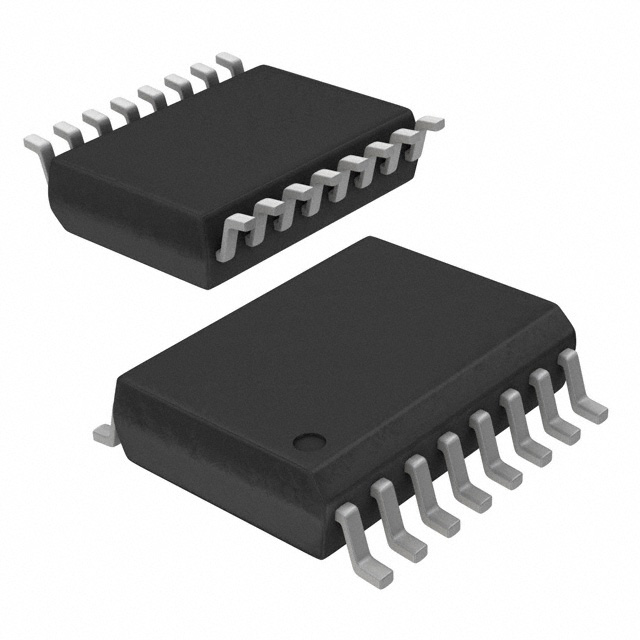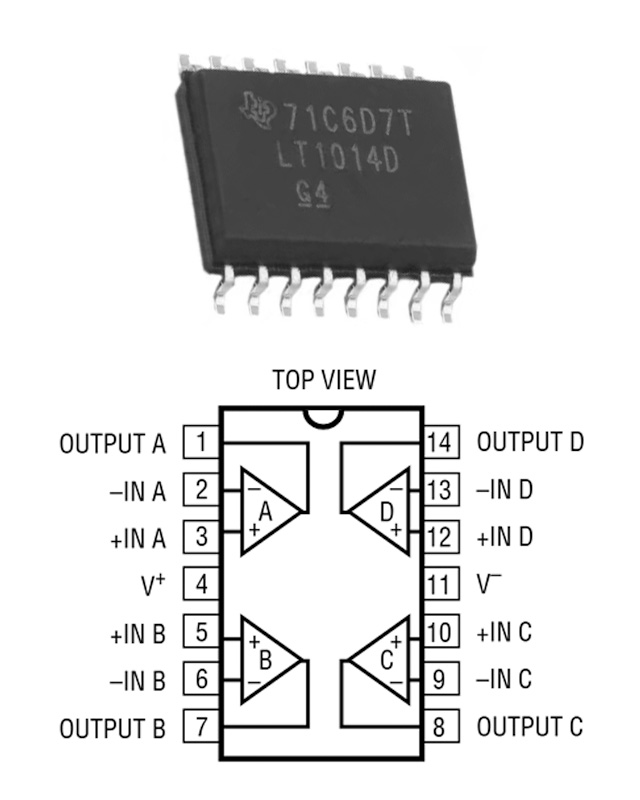LT1014DSW Quad Operational Amplifier<1014DSW Low Drift Op-Amp
If you’re looking for a quad operational amplifier that’s a big step up from something like the LM324, the LT1014DSW is worth checking out. Originally designed by Linear Technology and now manufactured by Analog Devices, this op-amp is great when you need super accurate and stable performance, especially for projects that deal with precise measurements or sensitive analog signals. What’s cool about the LT1014DSW is how little power it uses while still providing extremely low drift, which means your signal stays accurate even as temperatures change. So, if you’re working on things like instrumentation setups, measurement devices, sensor interfaces, or even analog computing, this op-amp can help you get the reliability and precision you’re after.
LT1014DSW Data Acquisition Systems Applications
If you’re working on a data acquisition system and need accuracy, stability, and reliability, the LT1014DSW quad op-amp is a great choice. It’s especially useful when you need precise analog-to-digital conversions in sensitive situations.
For example, let’s say you’re working with sensors—like temperature sensors (thermocouples or RTDs), pressure sensors, strain gauges, or photodiodes. This op-amp helps condition those signals nicely, so you can easily measure and digitize them accurately.
Another area it shines is analog filtering. If you need to build a low-pass, band-pass, or notch filter, this device can help you cut out noise or unwanted frequencies, ensuring your ADC only sees clean signals.
When it comes to matching your signal voltages to your ADC input, the LT1014DSW does a great job at level shifting and buffering. It lets you fully utilize your ADC’s resolution, which means you’ll get more accurate measurements overall.
And finally, if your signals need to travel a long way or you have to isolate them, this op-amp’s high input impedance is really helpful. It minimizes interference or loading effects on your measurement source, making sure your signals remain stable and accurate, even over longer distances.
LT1014DSW Alternative to OP484 Op-Amp
The LT1014DSW and OP484 are both quad precision operational amplifiers, making them suitable replacements for each other in precision analog designs. Here’s a comparison table summarizing their key parameters:
| Parameter |
LT1014DSW |
OP484 |
| Number of Amplifiers |
4 |
4 |
| Supply Voltage Range |
±2V to ±22V |
±1.5V to ±18V |
| Input Offset Voltage |
50 µV |
65 µV |
| Offset Voltage Drift |
0.3 µV/°C |
0.6 µV/°C |
| Input Bias Current |
12 nA |
3 nA |
| Gain Bandwidth (GBW) |
0.8 MHz |
4 MHz |
| Slew Rate |
0.3 V/µs |
4 V/µs |
| Input Voltage Range |
Includes Ground |
Includes Ground |
| Output Current |
±20 mA |
±10 mA |
| Quiescent Current/amp |
350 µA |
725 µA |
| Noise Density |
Low noise |
Ultra-low noise |
| Package Type |
SOIC-16 |
SOIC-14, DIP-14 |
| Typical Applications |
Precision measurement, Sensor interfaces, DAQ |
Precision instrumentation, Signal conditioning, High-speed ADC input |
If you’re thinking about swapping out the OP484 with the LT1014DSW in your circuit, it can actually be a solid choice, especially if you need something with better precision, lower drift, and a wider voltage range. But keep in mind, the OP484 still has its own strengths—it’s faster with a higher gain-bandwidth product and a quicker slew rate, plus it offers lower input bias current and incredibly low noise.
So, if you’re dealing with faster signals or working in an environment where noise levels are critical, sticking with the OP484 might give you better overall performance. It really comes down to what’s most important in your particular setup—precision and stability, or speed and ultra-low noise.
LT1014DSW Precision Analog Circuit Design

Precision Instrumentation Amplifier Circuit
First, your input signals, labeled +INPUT and -INPUT, will go through matching 20 kΩ resistors. Right after these resistors, you’ll see protective diodes connected to the 5 V rails—these little guys prevent any unexpected voltage spikes from damaging your amplifier. There’s also a 1 µF capacitor between the inputs, which smooths out high-frequency noise, making your measurements cleaner.
Next up is the differential amplification stage. Here, two op-amps from the LT1014 (pins 1,2,3 and 5,6,7) act as buffers. They precisely amplify the difference between your two input signals. The gain here depends on a resistor labeled RG, typically about 2 kΩ. If you need more or less amplification, just tweak RG. Using matching 200 kΩ feedback resistors helps keep everything stable and accurate.
After that, you have the summing amplifier (pins 12,13,14), which converts your amplified differential signal into a single-ended output. It uses matched 10 kΩ resistors for precise, balanced summation.
Finally, there’s a shield driver amplifier (pins 8,9,10) that actively reduces interference by driving your cable shields, enhancing signal accuracy and stability.






























